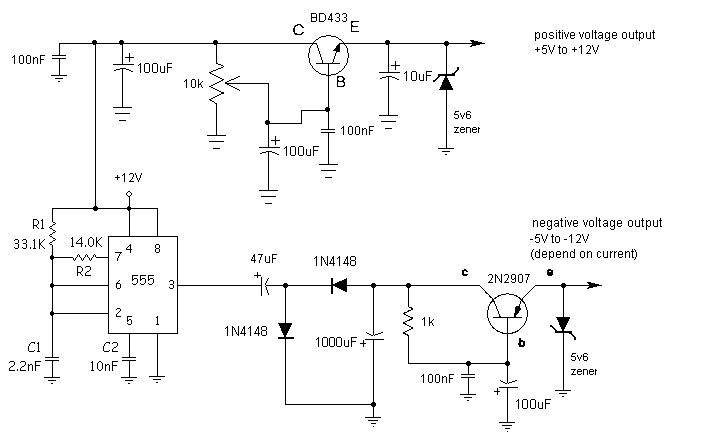A low frequency circulator/isolator for lab measurements and signal routing
by SV3ORA
A circulator/isolator is a very important piece of equipment for any microwave RF laboratory. It can be used in many ways, from impedance matching of antennas and in-circuit blocks, to signal routing and isolation. Whereas a circulator is a microwave component that uses ferrites in the signal path, modern opamps have allowed such a behaviour to be made available (for low signal levels) in the lower frequencies as well, of course not by using lossy ferrites, but using opamps. Until I built this circulator, all my efforts to achieve inter-stage or antenna impedance matching to 50 ohms, where theoretical and experimental.
The original design of this circulator is credit of Charles Wenzel,
thus many of the things from the original article will be repeated
here. I have just added my own power supply design, the PCB and the
whole construction into a single enclosure.
Key features of the active circulator/isolator:
Project files
Bottom
copper layer (PDF)
Bottom copper layer
(ExpressPCB)
G101
enclosure (PDF)
G101
enclosure (DWG)
G101 enclosure photo (PDF)

The whole circuit is enclosed inside a Gainta G101 die cast box, the smallest of the G-series. It's dimensions and look, are shown below.
|
|
|
Space inside the enclosure is very limited. The bottom PCB pins are just touching the metal box below. To prevent short circuits, a thick insulating membrane was added between the bottom pcb and the enclosure.
I used SMA connectors for the RF ports and the PSU line because of their small size, but almost any RF connector can be used at these low frequencies. I have chosen to use a coaxial connector for the PSU line, to shield it from external noise. Bare wires used for the PSU line, can pick up external noise and transfer it inside the circulator circuit. A shielded coaxial cable to connect the circulator to the PSU is the best.
Circulator applications
The circulator is a natural choice for the matching and tuning of low level amplifiers. With the signal source connected to port 1, the amplifier's input or output to port 2, and a signal analyzer to port 3, the amplifier is tuned for maximum return loss by adjusting for minimum signal at port 3. A high return loss is synonymous with a good VSWR since a well matched amplifier will "return", as a reflection, very little of the input signal.
Low level signal sources may also be adjusted for 50 ohm output impedance in a similar way. Simply adjust the frequency of the test signal until it is close to the carrier then tune the source for minimum reflection. Again, the reflected signal appears at the next port. If the source's amplitude is too high for the circulator's op-amps to handle just add an accurate attenuator. The circulator's accuracy is sufficiently high to "see" the return loss of a source through a small pad. Remember, the test signal passes through the pad twice and is attenuated each time so the return loss will seem better than it actually is by twice the attenuator value. In fact, a pad terminated with an open orshort will exhibit a return loss exactly twice the pad's attenuation factor since the return loss of an open or short is zero.
Antennas may be tuned in a similar manner without using large signals that might cause interference with others. A low power generator is connected to port 1, the antenna to port 2, and some form of power or signal level indicator to port 3. The signal level at port 3 is proportional to the transmission loss and should be minimized by tuning the antenna matching network.
A time domain reflectometer is easily realized by applying a fast square wave or pulse to port 1 and connecting the device or cable under test to port 2. Breaks in the cable or other high impedance anomalies will reflect pulses with the same polarity as the input whereas shorts or lower impedances will reflect inverted pulses. Remember the inversion from one port to the next. A clean test signal is necessary forgood results.
Circulators can be used for many more uses, including decoupling of generator and load of amplifier stages, reducing intermodulation caused by other transmitters, reducing load return loss and vswr, combining two and more transmitters, combining transmitters and receivers on the same antenna, combining amplifier stages in solid state transmitters, operating one-port-amplifiers, duplexing and locking and priming of oscillators. For practical examples about the use of circulators please read the Philips application note.
Can it be made better?
The
circulator is quite good as it is, but it could be made even
better. A good starting point would be to change the opamps with faster, lower
noise, higher power ones. This will probably require a more powerful PSU to
be made.
References
Low Frequency
Circulator/Isolator Uses No Ferrite or Magnet - Wenzel Associates
Circulators and Isolators, unique
passive devices - Philips application note AN98035